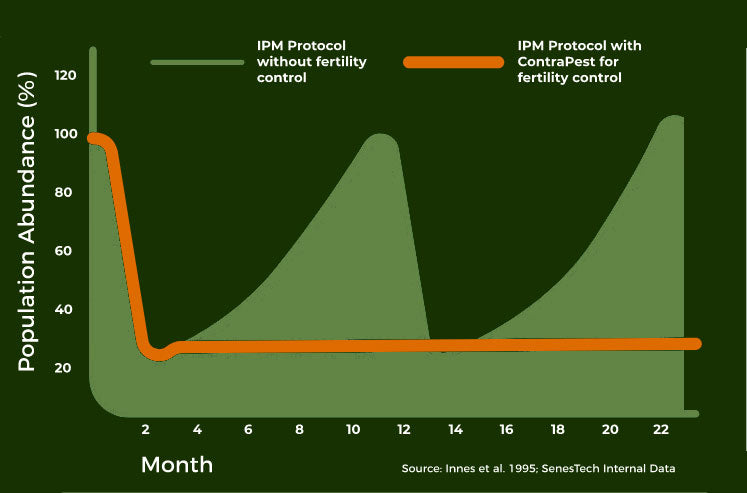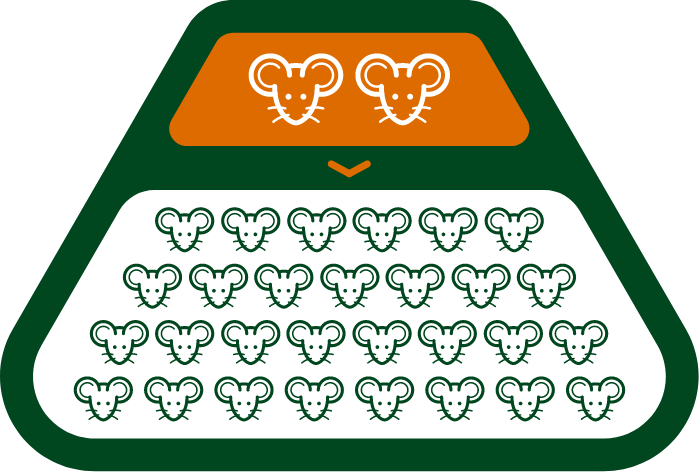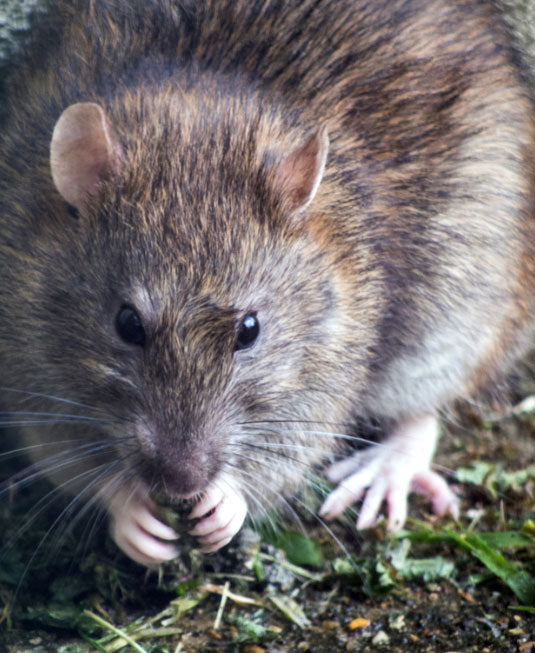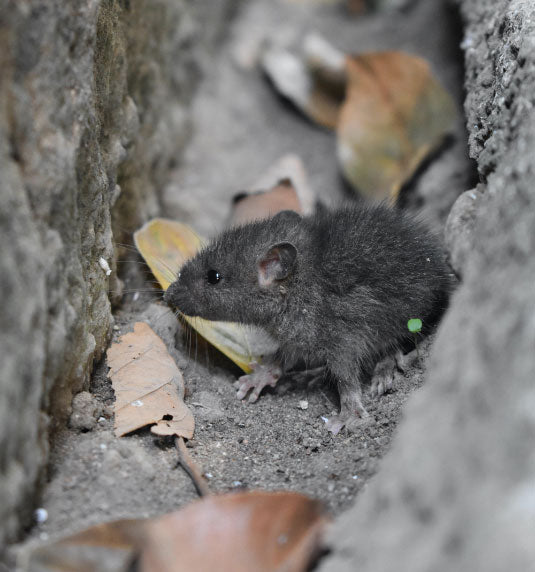Changing the game of Pest Management
Evolve™ soft bait and ContraPest® liquid Rat Birth Control™ work in tandem with traditional pest control methods as part of a complete Integrated Pest Management (IPM) strategy.

The Rebound Effect
Rodenticides or "poisons" are reactive, eliminating members of an existing rat population. But it only takes two survivors for a population to quickly rebound to its former size.
Since there are almost always a few survivors lethal methods alone do not guarantee long-term success. Fertility control targets an infestation at its source.

1 + 1 = 15,000
Numbers don’t lie even when things don't seem to add up. In fact, two surviving rats can turn into 15,000 descendants in little more than a year. Evolve™ soft bait and ContraPest® liquid rat birth control™ help avoid The Rebound Effect by targeting populations at the source.
RAT INFESTATIONS
Where do they all come from?
There are many reasons why rat populations explode – even after you think the problem has been solved.
Know your enemy
What’s there to know about rodents? You want them gone and that’s the point, right? For centuries, the buck stopped there. Not anymore.

Norway rats
The Norway rat (Rattus norvegicus) is known by many alternate names: the sewer rat, brown rat, water rat, wharf rat, and gray rat are a few examples. This rat is considered common across the United States. Norway rats will typically nest in the ground, in wall cavities, or under discarded materials in your yard or garage.
How do I identify a Norway rat?
- Blunt nose, small ears, and small eyes
- Brown fur lightens toward the underside
- Tail and ears are hairless and covered in scales
- Tail is short compared to body
- Larger rats, up to 18 inches long. Weighs 12-16 ounces (or weights up to 1lb)
What do Norway rats eat?
Norway rats eat a variety of foods but prefer proteins and carbohydrates. Food items from household garbage provide these rats with a balanced diet. They will eat meats, fish, cereal grains, livestock feed, and fresh fruits. They will also kill and eat various small reptiles, mammals, birds, and insects.
Norway rats need an abundant supply of water for survival (roughly 10% of their body weight every day). If infesting the inside of your home, they will seek out water from toilets, sinks, and even condensation collecting on utility pipes. Outdoors, they will search for areas where water collects, like rain puddles.

Roof rats
Roof rats (Rattus rattus) are smaller in size and tend to be more slender compared to Norway rats. Roof rats tend to have longer tails that reach up to and over their heads. These rats are also called gray-bellied rats, white-bellied rats, black rats, and ship rats.
How do I identify a roof rat?
Often mistaken for common house mice, roof rats have pointed noses and large ears. However, what sets roof rats apart from mice is their proportionately large heads and feet compared to their bodies.
- Large ears and eyes, pointed nose
- Black or dark-brown fur, can be light or dark on underside
- Tail is longer than body, can be 7 to 10 inches in length
- Thinner rat, up to 8 inches long (not including tail), and weighs 5-12 ounces
- Smaller than Norways and juvenile roof rats can be mistaken as mice
What do roof rats eat?
Roof rats will eat meat and grain, but their coastal roots drive them to prefer fresh fruits, seeds, and nuts. They will also eat snails, slugs, and insects. Overall, roof rats eat smaller portions of food compared to Norway rats.
Roof rats prefer to live above ground in shrubs, trees, or attics. They also love to eat in multiple locations. Knowing where roof rats live and eat can help when outfitting your integrated pest management program.





